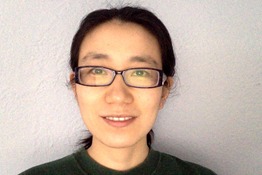Program Information
Dual Energy CT Proton Stopping Power Ratio Calibration and Validation with Animal Tissues
Y Xie*, L Yin , C Ainsley , J McDonough , T Solberg , A Lin , B Teo , University of Pennsylvania, Philadelphia, PA
Presentations
TU-FG-BRB-1 (Tuesday, August 2, 2016) 1:45 PM - 3:45 PM Room: Ballroom B
Purpose: The conversion of Hounsfield Unit (HU) to proton stopping power ratio (SPR) is a main source of uncertainty in proton therapy. In this study, the SPRs of animal tissues were measured and compared with prediction from dual energy CT (DECT) and single energy CT (SECT) calibrations.
Methods: A stoichiometric calibration method for DECT was applied to predict the SPR using CT images acquired at 80 kVp and 140 kVp. The dual energy index was derived based on the HUs of the paired spectral images and used to calculate the SPRs of the materials. Tissue surrogates with known chemical compositions were used for calibration, and animal tissues (pig brain, liver, kidney; veal shank, muscle) were used for validation. The materials were irradiated with proton pencil beams, and SPRs were deduced from the residual proton range measured using a multi-layer ion chamber device. In addition, Gafchromic EBT3 films were used to measure the distal dose profiles after irradiation through the tissue samples and compared with those calculated by the treatment planning system using both DECT and SECT predicted SPRs.
Results: The differences in SPR between DECT prediction and measurement were -0.31±0.36% for bone, 0.47±0.42% for brain, 0.67±0.15% for liver, 0.51±0.52% for kidney, and -0.96±0.15% for muscle. The corresponding results using SECT were 3.1±0.12%, 1.90±0.45%, -0.66±0.11%, 2.33±0.21%, and -1.70±0.17%. In the film measurements, average distances between film and calculated distal dose profiles were 0.35±0.12 mm for DECT calibration and -1.22±0.12 mm for SECT calibration for a beam with a range of 15.79 cm.
Conclusion: Our study indicates that DECT is superior to SECT for proton SPR prediction and has the potential to reduce the range uncertainty to less than 2%. DECT may permit the use of tighter distal and proximal range uncertainty margins for treatment, thereby increasing the precision of proton therapy.
Contact Email:

